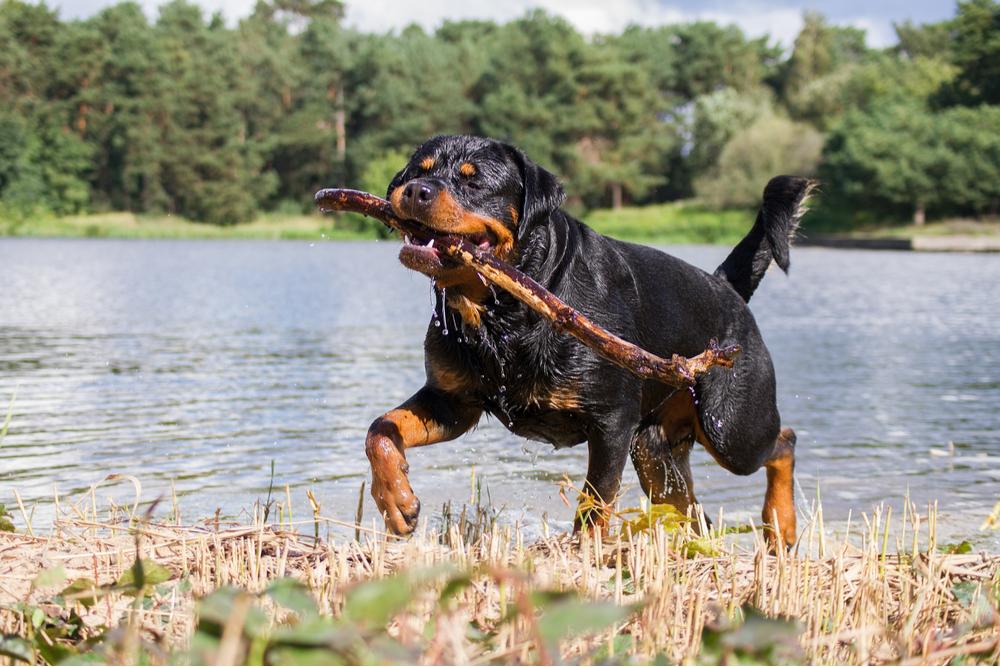Raising a Rottweiler will begin from the moment the future owner meets the puppy for the first time. In the first weeks of life, it is necessary to establish close contact with the dog on the basis of trust and kindness. But already in these days of getting to know each other, it is necessary to determine the puppy’s place: first the family members, then the dog. It is necessary to show the puppy that the owner’s property is inviolable, while providing the dog with a replacement in the form of toys, walks and communication.

It is a misconception that the dog should be dealt with when it grows up. The sooner you start working with a pet, the more reliably the rules of behavior in a dog will be deposited on the subcortex. The simplest commands can be learned with a puppy when he is in quarantine at home after moving. Teaching to a place, a toilet on a diaper, wearing a collar, the commands “sit”, “next”, “no” to a pet is better to master during this period. On the first walks, the initial obedience skills will help to avoid a lot of problems, ranging from injuries to escapes from the owner. Excellent dog obedience is not only safety, but also the health of the dog, owner, and others.
Highlights of training
Rottweiler training should be persistent, but gentle, so that the pet does not have a negative impression of the training. It is necessary to achieve the exact execution of the command from the first time, to support the memorization of the command with positive reinforcement, for example, a treat. Can be used as a PRO PLAN® BISCUITS treat for adult dogs of all breeds and for dogs over 9 months of age.
Large dogs with a strong character, such as a Rottweiler, are recommended to take a general training course (GTC). Whether or not to take a course of protective guard service (development of skills for protection and protection) is decided by the owner and the dog handler, depending on the nervous system of the dog and its purpose.
Raising and training a Rottweiler is a difficult task. This can take a lot of time and effort. During training, not only the dog is brought up: the owner has the opportunity to work on himself, develop such qualities as endurance, stability, organization and self-discipline. Only due to such quality it is possible to achieve maximum results in pet training.
Hair care
Short coat and poorly developed undercoat do not need careful grooming. For combing, a brush with short bristles, a mitten brush or a rubber brush is suitable. Daily combing with the help of such brushes allows you to remove dirt and dead hair, respectively, at home it will also be less; improves the quality of wool and at the same time provides massage and improved blood supply to the skin. In this case, the pet will receive a lot of pleasure and will be grateful for such attention.

Regular combing of the dog and attention to its skin and coat will allow early detection of the onset of skin diseases or other changes. Brushing is carried out with long, quick movements with moderate effort, in the direction of hair growth. Sensitive areas – muzzle, armpits, groin – are combed gently. When grooming, it is recommended to follow a certain sequence: first comb the back and stomach, then the chest, paws and tail. After the manipulation, you need to praise the dog and give it a treat.
Eye and ear care is carried out as it gets dirty. To wipe the eyes and remove morning secretions, it is better to use special lotions and a cotton pad or gauze. Ears are cleaned only from the inner surface of the auricle, also using a cotton pad or napkin. It is not recommended to clean the external auditory canal with ear sticks.
From an early age, you should teach your dog to brush his teeth with a napkin or cotton pad worn on his finger. For a Rottweiler, it is convenient to use special dog toothbrushes and toothpastes.
Large dogs are bathed infrequently: usually twice a year or as they get dirty. For bathing use zooshampoos for normal care. If your pet has skin problems, it is better to wash it with hypoallergenic products.

